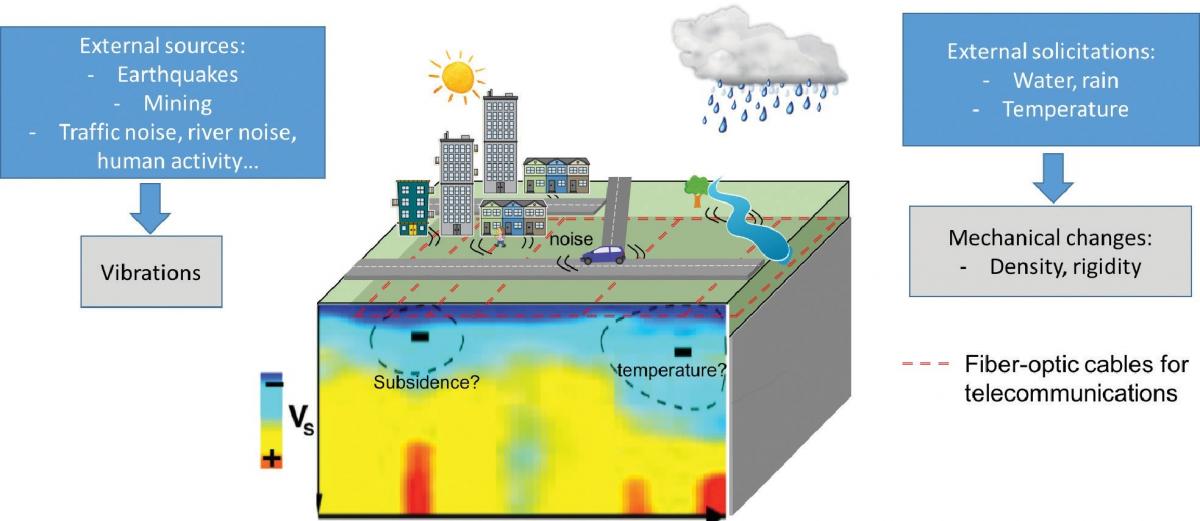
The Fiber-Optic foR Environmental SEnsEing (FORESEE) project, led by Tieyuan Zhu, assistant professor of geophysics, collects high-resolution acoustic vibration data using underground telecommunication fiber-optic cables under Penn State University Park. The data allows researchers to monitor in real-time near surface environmental systems for external impacts from earthquakes, land subsidence and sinkholes, and extreme weather events, like heavy rainfall and drought. This project is funded by an Institutes of Energy and Environment (IEE) seed grant (April 2019 – June 2020).
Beginning in April 2019, the researchers used a distributed acoustic sensing (DAS) array to tap into one strand of a pre- existing fiber-optic cable run underneath the University Park campus. The pre-existing fiber cable for telecommunications are directly laid in the concrete conduit at a depth of about three feet. The DAS array made continuous strain rate measurements at a 500 Hz sampling frequency with a thirty-two-foot gauge length along the 14,000-foot length of the fiber-optic cable.
The DAS interrogator technology enables researchers to convert the telecommunication fiber-optic cables to an array of acoustic sensors that provides continuous measurements of strain rate fields in space and time. Compared to seismometers, the fiber-optic sensor array is composed of up to tens of miles of fiber-optic cable that can use the pre-existing infrastructure widely installed in urban and suburban areas. Fiber-optic cables make ideal sensors that are inexpensive, flexible, insensitive to electrical noise, and can be left in the ground virtually undisturbed for long-term, real-time studies.
The real-time fiber-optics monitoring data will capture the seasonal variations of natural events and near-surface environments in State College, Pennsylvania, which experiences severe storms and flooding in summer, and long-term threats from land subsidence, or sinkholes. The researchers expect this fiber-optics monitoring data to provide an assessment of the impacts of natural events on communities, and further improve our understanding of the coupling effects between atmosphere-Earth- human systems. The project will also lead to increases in the early warning capabilities for decision-makers by helping them to be more aware of subsurface environmental changes before costly infrastructure failures occur.
This project involves early-career faculty, graduate students, and undergraduate students. The researchers plan to partner with Penn State’s Data Commons to make the data and results publicly accessible to urge more researchers in the geophysics, civil and environmental engineering, and data science communities learn to work with fiber-optic sensing data.
To date, the fiber array recorded a variety of different vibrations, like human steps, traffic signals, concerts, and earthquakes.
The scientists’ recent study showed that the FORESEE array can detect and track thunderstorms associated with lightning strikes.
For more information, visit the project website: https://sites.psu.edu/tzhu/foresee/

